> I AM A HEALTHCARE
PROFESSIONAL
interested in prescribing
Sotylize to my patients.
> I AM A PATIENT
OR CAREGIVER
interested in learning
more about Sotylize
IMPORTANT SAFETY INFORMATION
Warning: LIFE THREATENING
PROARRHYTHMIA
See full Prescribing Information for complete boxed warning.
- Sotalol can cause life threatening ventricular tachycardia associated with QT interval prolongation
- Do not initiate sotalol therapy if the baseline QTc is longer than 450 ms. If the QT interval prolongs to 500 ms or greater, the dose must be reduced, the interval between doses prolonged, or the drug discontinued.
- Patient should be hospitalized in a facility that can provide cardiac resuscitation and continuous electrocardiographic monitoring
- Adjust the dosing interval based on creatinine clearance
Please see Important Safety Information below, as well as the full Prescribing Information.
CONTRAINDICATIONS
- Sinus bradycardia (<50 bpm during waking hours), sick sinus syndrome or second and third degree AV block unless a functioning pacemaker is present
- Congenital or acquired long QT syndromes, baseline QT interval >450 ms
- Cardiogenic shock, uncontrolled heart failure
- Creatinine clearance <40 mL/min
- Serum potassium <4 mEq/L
- Bronchial asthma or related bronchospastic conditions
- Known hypersensitivity to sotalol
WARNINGS AND PRECAUTIONS
Because of the possible life-threatening proarrhythmic effects, use of SOTYLIZE with less severe arrhythmias, even if symptomatic, is generally not recommended. Treatment of asymptomatic ventricular premature contractions should be avoided. SOTYLIZE should be reserved for patients with highly symptomatic AFIB/AFL and not for patients with paroxysmal AFIB whose AFIB/AFL is easily reversed (by Valsalva maneuver, for example).
QT Prolongation and Proarrhythmia: SOTYLIZE can cause serious ventricular arrhythmias, primarily Torsade de Pointes (TdP), a polymorphic tachycardia associated with QT interval prolongation. SOTYLIZE use in conjunction with other QT prolonging drugs has not been studied and is not recommended.
Bradycardia/Heart Block Renal Impairment: There is a direct relationship between renal function, as measured by serum creatinine or creatinine clearance, and the elimination rate of sotalol.
Sick Sinus Syndrome: SOTYLIZE is not recommended in patients with sick sinus syndrome associated with symptomatic arrhythmias because it may cause sinus bradycardia, pause or arrest. In AFIB and sinus node dysfunction, sotalol increases the risk of Torsade de Pointes, especially after cardioversion. Sotalol augments bradycardia following cardioversion. Patients with AFIB/AFL associated with the sick sinus syndrome may be treated with sotalol if they have an implanted pacemaker.
Hypotension: Monitor hemodynamics in patients with marginal cardiac compensation.
Recent Acute MI: Experience in the early phase of acute MI recovery is limited.
Abrupt Withdrawal: When discontinuing chronically administered sotalol, particularly with ischemic heart disease, carefully monitor and consider temporary use of an alternate beta-blocker if appropriate.
Electrolyte Disturbances: SOTYLIZE should not be used in patients with hypokalemia or hypomagnesemia prior to correction of imbalance, as these conditions increase the potential for Torsade de Pointes. Special attention should be given to electrolyte and acid-base balance in patients experiencing severe or prolonged diarrhea or patients receiving concomitant diuretic drugs.
Non-Allergic Bronchospasm: Patients with bronchospastic diseases should in general not receive beta-blockers. If SOTYLIZE is to be administered, use the smallest effective dose, to minimize inhibition of bronchodilation produced by endogenous or exogenous catecholamine stimulation of beta2 receptors.
Diabetes: Beta-blockade may mask some important premonitory signs of acute hypoglycemia (e.g., tachycardia) in diabetic (especially labile) patients with episodic spontaneous hypoglycemia.
Thyrotoxicosis: Beta-blockade may mask certain clinical signs (e.g., tachycardia) of hyperthyroidism. Abrupt withdrawal of SOTYLIZE may exacerbate hyperthyroid symptoms, including thyroid storm.
Anaphylaxis: While taking beta-blockers, patients with a history of severe allergic reactions may have a more severe reaction on repeated challenge, whether accidental, diagnostic, or therapeutic and may be unresponsive to the usual doses of epinephrine used to treat the reaction.
ADVERSE REACTIONS
The most common adverse reactions (>10%) seen with oral sotalol (dose related) are fatigue, bradycardia, dizziness, and headache.
DRUG INTERACTIONS
- Digoxin increases the risk of proarrhythmic events
- Calcium-blocking drugs may have additive effects on decreasing atrioventricular conduction, ventricular function, and blood pressure
- Concomitant use of catecholamine-depleting drugs may produce hypotension, marked bradycardia, and syncope
- Dosage of insulin or antidiabetic drugs may require adjustment
- Dose of beta-2 receptor agonists may have to be increased
- Sotalol may potentiate rebound hypertension after discontinuation of clonidine
- Aluminum or magnesium-based antacids reduce sotalol exposure
You are encouraged to report side effects of prescription drugs to Arbor Pharmaceuticals, LLC Medical Information at +1-866-516-4950 or to the FDA at www.fda.gov/medwatch or call +1-800-FDA-1088.
For additional Safety information, consult the SOTYLIZE full Prescribing Information.
